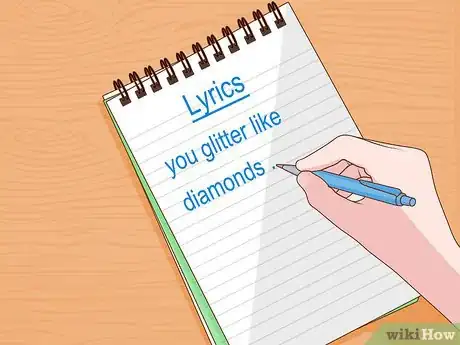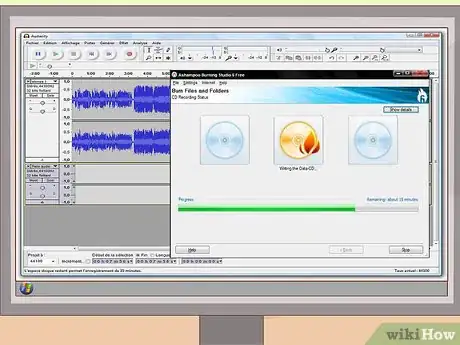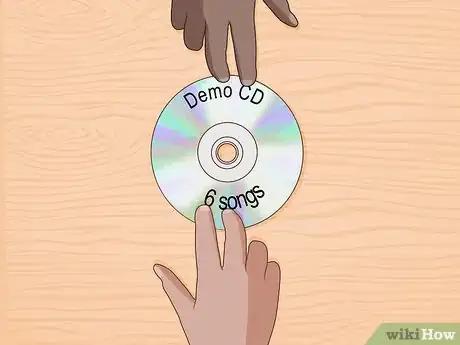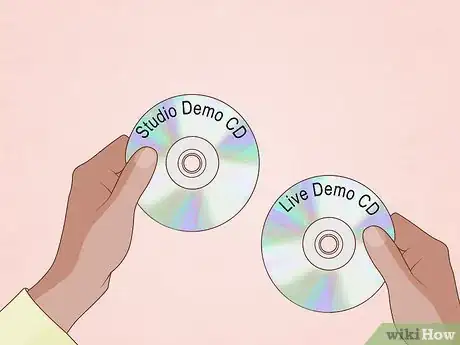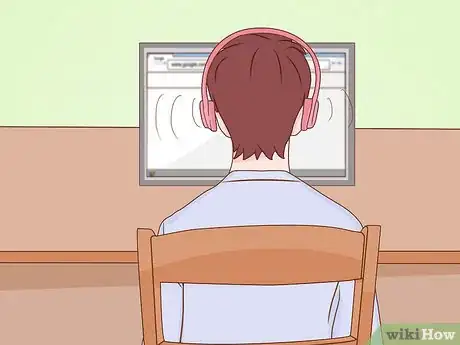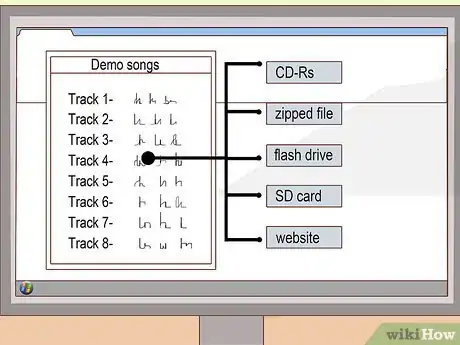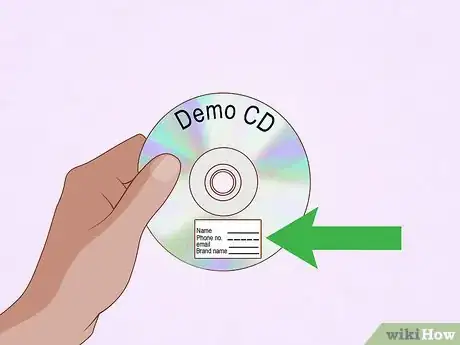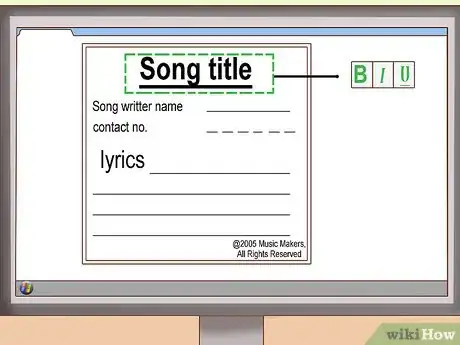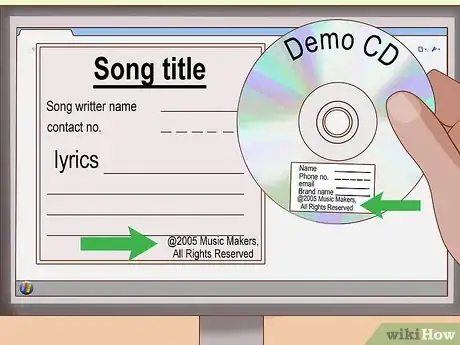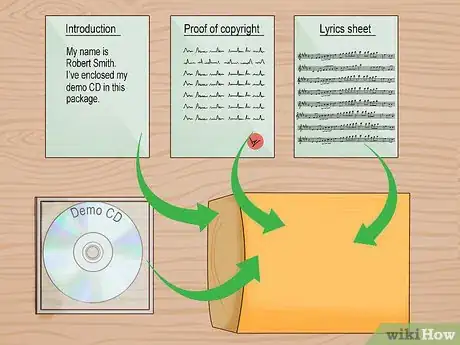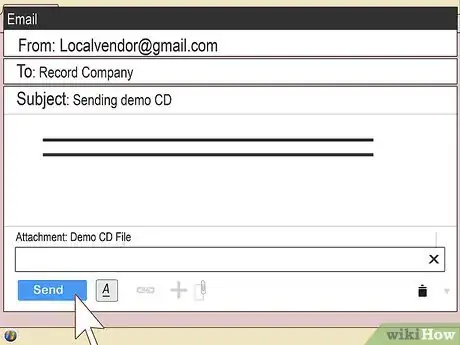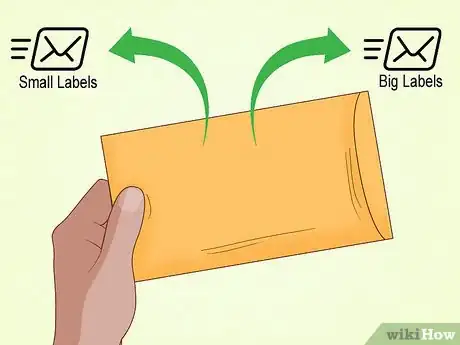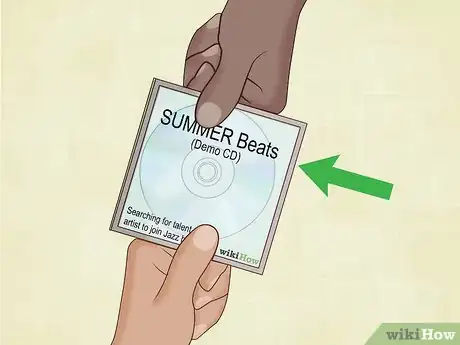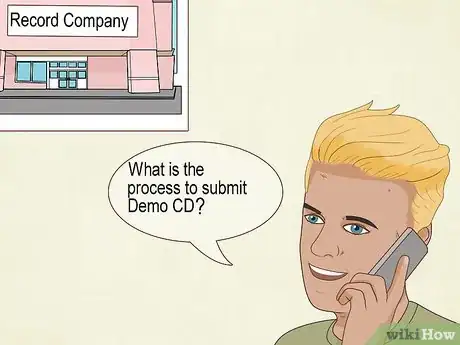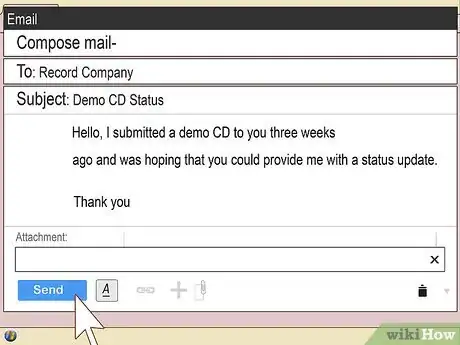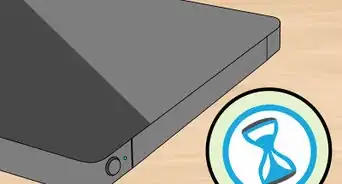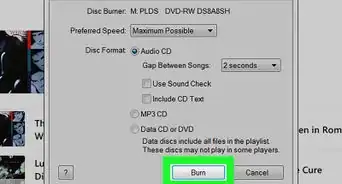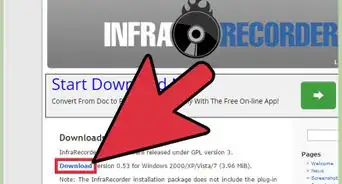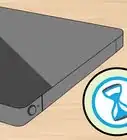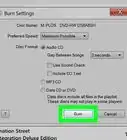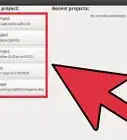This article was co-authored by wikiHow Staff. Our trained team of editors and researchers validate articles for accuracy and comprehensiveness. wikiHow's Content Management Team carefully monitors the work from our editorial staff to ensure that each article is backed by trusted research and meets our high quality standards.
This article has been viewed 240,561 times.
Learn more...
Creating a demo, also called a demonstration, CD is a great way to get noticed in the music industry. You can make your CD at home with sound software or at a professional studio. Either way, make sure that the songs on your demo reflect your very best work and creativity. Once the CD is ready for listening, send it out to record labels, local gig managers, and other musicians. Sit back and wait for the accolades to roll in![1]
Steps
Recording Your Demo
-
1Write strong lyrics. The words need to be original and must make an instant impact on the listener. Tell a story that is easy to understand and doesn’t require any extra work on the part of the listener. Make it catchy and memorable. You want the listener to feel the urge to sing or hum along with you.
- If you are looking for a gig as a cover band, it is fine to include songs that are not your own. In most other cases, you’ll need to use original material.
- If you play in a band and need new songs for your demo CD, consider reaching out to a professional songwriter. You can usually find one by talking to other musicians in your area.
- For example, the lyrics, “you glitter like diamonds,” creates an instant mental image for your listener.
-
2Fit what the label wants. Get a number of CDs published by the labels that interest you and listen to them closely. Pay particular attention to the genre of music and how it sounds. Many independent labels pride themselves on developing a unique “sound.” If you fit within their current offerings, and maybe push the boundaries a bit, you are more likely to get interested.[2]
- For example, some labels focus exclusively on jazz, pop, or even classical music.
Advertisement -
3Record yourself with a music computer program. It may be that the cost of recording in a studio and hiring a professional engineer to mix your music just isn’t an option. Set yourself up with a good computer and a recording program, such as Audacity. Adjust the program’s settings and do a number of test runs to find out what set-up creates the best music quality. Then, burn your best song results onto a CD.[3]
- Most of these programs allow you to record your voice with a microphone with the sound wave open for editing. You can also import other audio files, like instruments, and blend them together with yours.
- Make sure to keep a non-compressed audio version that you can give to a professional engineer if you choose to eventually work with one.[4]
-
4Go to a professional studio. Search for studios in your area by looking online or taking recommendations from fellow musicians. Meet with the studio manager and then go ahead and book your session. Save yourself time by having your music typed out in advance and arrange to work with skilled studio musicians.[5]
- When you work in a studio you’ll also get help from a producer, who may serve as the studio manager and engineer as well.
- Double-check all of the fees charged in advance so that you’ll know what to expect. Studios will sometimes offer a discount if you book during off-hours, like on a weekday morning, or if you reserve a few large time blocks.
- Working with studio musicians is important because they will know what kinds of sounds translate the best in a recording setting. For example, a drummer will understand how to get audio with loud pedal noises.
-
5Include three to six songs. Demo listeners often have a stack of CDs on their desks. Keeping your demo CD short means that they’ll be able to make it to the finish, if they like what they hear. If you send a longer CD, go ahead and include a brief statement telling the listener which ones they should focus on (it should be the first three songs).
- In addition, you can add in a link to a website with more songs. This gives the listener an opportunity to see what a full CD might sound like.
-
6Open with your strongest song. Placing your best track first gives you the chance to catch your listener’s attention right away. It will also tell your listener about what you perceive to be your own strengths. It’s a good idea to include your second best song in the second position and so on.[6]
-
7Include a live recording. If you do an especially great live show or if you are trying to book a gig, it’s a good idea to include at least one live song on your CD. Or, you could create two demo CDs: one in-studio and one live. Make sure that you can hear both an excited crowd and your music on the live songs.[7]
-
8Check the sound quality. When your CD is finished, play it on your computer and on another sound system, such as the one in your car. There should be a good balance of sound between any singers and instruments without one drowning out the other. The music should sound crisp without any fuzziness or echoes. Trust your instincts and never send out a demo that sounds cheap.
Packaging Your Demo
-
1Create it in multiple formats. CD-Rs are a format that most people can access easily. You can also place your songs onto a zipped file online or even make them available for streaming. For other hard-copy options, loading everything onto a flash drive or SD card can work well.[8]
- If you decide to put your music onto a website or social media site, consider including this information on a business card that you can hand out or put with your mailed materials.
- Cassette tapes are really no longer used unless you are going for a retro feel. The danger lies in whether or not your listener has an audio deck capable of playing tapes.
-
2Include your contact information on the actual file. This is a common mistake that many people make when sending out demo CDs. It’s very possible that your CD will end up separated from any other materials that you send. Stick a label onto the front of the CD with your name, phone number, email, band name, and any other information that you choose.
- Don’t just place your name and number on the CD’s sleeve. If the sleeve gets removed and lost, they’ll have no way to contact you.
-
3Include a lyrics sheet. Type your song lyrics using a readable font, such as Times New Roman. Each song should have its own page. In the header section, put the song title in bold and quotation marks. Then, list the name of each songwriter and your contact information. Space down a few lines and type up the lyrics, keeping them left-indented.
-
4Include a copyright notice. Tape or type a notice on the front of the CD where it is clearly visible. Add in another duplicate notice on the lyrics sheet or any other materials that you send along. This protects your work from intellectual theft.
- Go to the official website of the copyright office in your country for forms and details.
- A copyright notice will usually look something like, “(@2005 Music Makers, All Rights Reserved).”
-
5Pack your demo for submission. When you send your demo off to a label or venue, include the CD itself, a brief letter of introduction, proof of copyright, and lyrics sheets. Some people also include their professional resume, which lists all of their gigs and collaborations. If you are mailing in your package, opt for a bubble mailer to protect all of the contents.
- For example, in an introductory letter, you might write, “My name is Robert Smith. I’ve enclosed my demo CD in this package and would appreciate your consideration of it.”
Sending Out Your Demo
-
1Send your demo to local venues to book a gig. If you are an artist trying to land a gig, you can mail, email, or hand-deliver your demo CD package to venues in your area. If you have personal connections, use them to obtain a personal meeting with the venue’s booker. You can also send out your demos without making prior contact except to find out the mailing information.
-
2Submit your demo to labels for a record deal. Record companies are always looking for the next big solo artist or band. Research the labels that sign artists similar to you and then mail out your demo CD packages. It’s best to send your CDs to both large and small labels that sign bands playing your type of music.
-
3Send your demo out to local talent to find a music partner. Circulating your demo CD around to other musicians in your area is a great way to find a band member or future collaborator. Be prepared to send out a large number of CDs when following this approach, as you usually need to spread the word far and wide to get results.[9]
- You might package the CD with a message about what type of band member or artist you are searching for.
-
4Send it to the right person. Call up the record company or venue and ask about their submissions process. Specifically, get the exact address and contact information for the person who is responsible for receiving and evaluating demo CDs. Make sure that you get the person’s exact title, which will help you write any letters that you plan to enclose.[10]
- While you have them on the phone, ask if they have any suggestions or tips for how you should mail or package your CD. They might, for example, suggest that you use a basic mailing envelope and nothing else.
- It’s also possible that the label does not accept unsolicited CDs and making a phone call in advance could save you a wasted CD.[11]
-
5Check your status about a month after submission. Just write a quick email to the person that you mailed your CD to. You could also do a phone call to a main line of the label, but be prepared to leave a message. If you never hear anything back, then you can assume that the answer is “no” and move on to your other submissions.[12]
- For example, you might write, “Hello, I submitted a demo CD to you three weeks ago and was hoping that you could provide me with a status update. Thank you!”
Community Q&A
-
QuestionHow do I know if a song is good?
 Community AnswerListen to it to see if you enjoy it. Everyone's music taste varies. It all depends on what you enjoy and you own opinion. Even if others disparage it, if it does something for your soul, then it's a great song.
Community AnswerListen to it to see if you enjoy it. Everyone's music taste varies. It all depends on what you enjoy and you own opinion. Even if others disparage it, if it does something for your soul, then it's a great song. -
QuestionDo I need a cover image for my demo recording, or not?
 jose godofredo tuliaoCommunity AnswerIt's better to provide one if you can. Making a great demo cover will make the release more memorable. Find a good artist to make the cover or find a suitable photo to represent the release.
jose godofredo tuliaoCommunity AnswerIt's better to provide one if you can. Making a great demo cover will make the release more memorable. Find a good artist to make the cover or find a suitable photo to represent the release. -
QuestionDo demo tracks have to be fully produced with drums, electric guitars, bass etc., or can someone be playing the guitar while you sing the song? How long should the two demo tracks be?
 Community AnswerEvery good demo should be like a short album with 4 to 6 songs, unlike the usual 12 to 20 songs. As for what you include on the track, that is really up to your style of music. If you only play a guitar and sing along, then that's your demo tape reflecting your style. If you are a band, then you'll need the whole range of instruments that are relevant to the music you make.
Community AnswerEvery good demo should be like a short album with 4 to 6 songs, unlike the usual 12 to 20 songs. As for what you include on the track, that is really up to your style of music. If you only play a guitar and sing along, then that's your demo tape reflecting your style. If you are a band, then you'll need the whole range of instruments that are relevant to the music you make.
Warnings
- Make sure that you use the right postage for your CD packages. It’s probably easiest to simply take them to the postal office for mailing. This way you know they’ll get there.⧼thumbs_response⧽
References
- ↑ http://cdm.link/2007/07/how-to-create-a-successful-demo-disc-tips-and-resources-chicago-event/
- ↑ http://cdm.link/2007/07/how-to-create-a-successful-demo-disc-tips-and-resources-chicago-event/
- ↑ http://www.makeuseof.com/tag/stepbystep-guide-audacity-produce-home-music-recordings/
- ↑ http://cdm.link/2007/07/how-to-create-a-successful-demo-disc-tips-and-resources-chicago-event/
- ↑ http://www.musesmuse.com/jacirae-demo.html
- ↑ http://cdm.link/2007/07/how-to-create-a-successful-demo-disc-tips-and-resources-chicago-event/
- ↑ http://cdm.link/2007/07/how-to-create-a-successful-demo-disc-tips-and-resources-chicago-event/
- ↑ http://cdm.link/2007/07/how-to-create-a-successful-demo-disc-tips-and-resources-chicago-event/
- ↑ http://blog.sonicbids.com/5-crucial-rules-for-recording-a-demo
